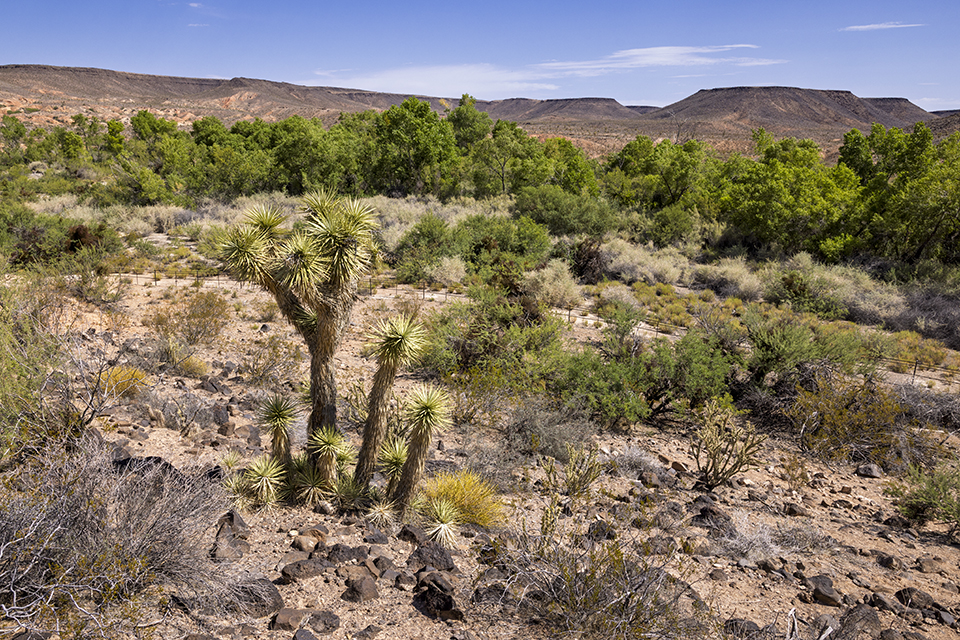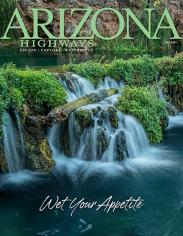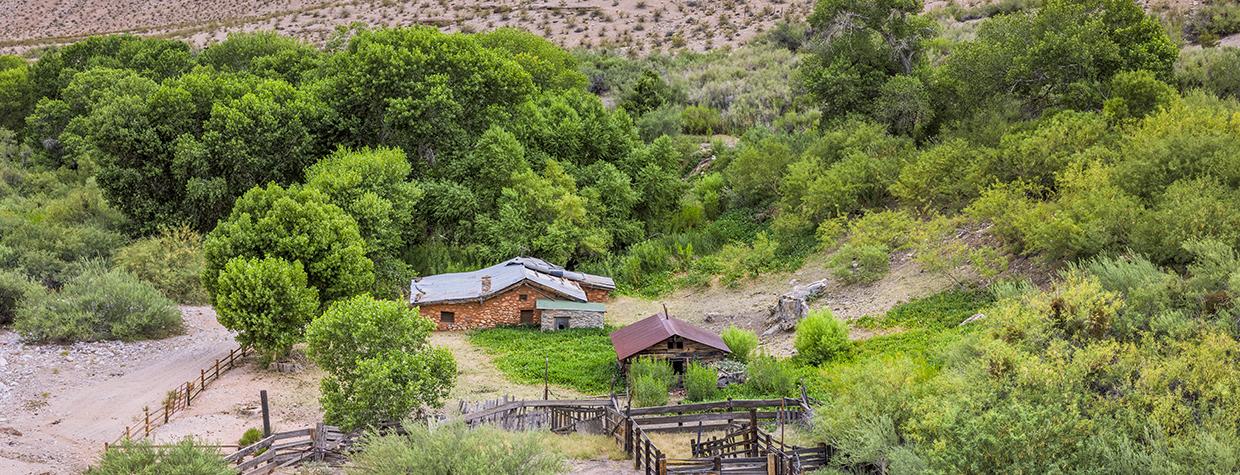Since 2000, Grand Canyon-Parashant National Monument has protected a vast, diverse landscape on the Canyon’s North Rim — and almost no one has seen it. That’s to be expected, given that parts of the 1 million-acre monument are inaccessible in the winter and others are oppressively hot in the summer. Throw in Parashant being a long drive from almost everywhere and lacking a single paved road, and you can understand why only 200 people per day, on average, pay the monument a visit.
But there’s plenty to discover at Parashant, including in its western section, where two sites celebrate the monument’s human history and unique ecology. According to Parashant Superintendent Ben Roberts, both are valuable for their “intersection of cultural heritage and environmental considerations.” They’re nice to look at, too.
Pakoon Springs
There aren’t many places in Northwestern Arizona where you can find a hillside of Joshua trees a stone’s throw from a stand of tall cottonwoods. That juxtaposition is part of the appeal at Pakoon Springs, where perennial water has created a riparian oasis in the middle of the high desert. It’s also a place, Roberts says, where visitors can understand and appreciate “the importance of restoring natural habitats for native species.”
The place was somewhat unnatural for a while. Starting in the 1960s, Chuck Simmons owned the Pakoon area and kept pigs and burros there. He also tried to cash in on a 1980s craze by raising some 500 ostriches, but demand for ostrich meat soon cratered, and he was forced to give away most of the birds.
The most famous resident, though, was Clem, an 8-foot alligator imported from Georgia as a gift from Simmons’ friends. According to the National Park Service, the gator “kept to himself most days, barring a few exceptions when he was lured out with seven whole chickens or children swimming in his pond.” Clem proved elusive enough that after the monument’s creation, it took multiple attempts for a team from the Phoenix area to capture and remove him in 2003.
Since then, the monument, jointly managed by the Park Service and the Bureau of Land Management, has aimed to return the springs to their natural state. Workers have removed a dwelling, non-native plants and large stock ponds, allowing native vegetation to thrive and water to flow freely. The team has also introduced the relict leopard frog, found only in this corner of the Southwest and once thought to be extinct.
The result is a verdant landscape that cools the surrounding air and provides habitat for migratory birds and bighorn sheep. It’s a draw for visitors, too, who can explore Pakoon Springs via an easy loop trail from the parking area. These days, the risk of an alligator attack is as low as it gets.

Tassi Ranch
While the human element has largely been removed from Pakoon Springs, Tassi Ranch, several miles down the road, preserves one of Arizona’s most remote homesteads: a dwelling built by Ed Yates in the 1930s near several more of the area’s springs.
A close look at the house illustrates how hard it was to find building materials in such an isolated location. Rather than the log construction typical of the time and region, Yates used rocks that had been quarried from the area and likely used in an earlier building. Described by the Park Service as “a rough-and-tumble cattleman,” Yates went on to improve the springs, plant shade trees and crops, and construct corrals and an irrigation system.
Crops at Tassi Ranch included tomatoes, corn, watermelon and chard. Yates and members of his family lived there for decades before selling the ranch to the Whitmore family, who owned it until the Park Service took full control after the monument’s creation. Roberts says the site is “a remarkable example of ranching history in this arid region,” adding that the adaptations employed there illustrate “the challenges of ranching in a remote desert environment.”
Attractions at Tassi Ranch include the springs — home to the speckled dace, the only native fish species at Parashant — along with the barn and corrals. The centerpiece, though, is the stone ranch house, which is closed to visitors due to hantavirus risks and concerns about structural integrity. Roberts says that won’t change anytime soon, but plans are in place to maintain the house and the surrounding landscape, which visitors are welcome to explore.
For a panoramic view of the site, continue past it and up the hill to the southwest, where a vault toilet sits near an old airstrip. From here, you can see Tassi Ranch’s isolation amid rolling desert hills — and it’s a view you’re likely to have all to yourself. It’s Parashant, after all.

